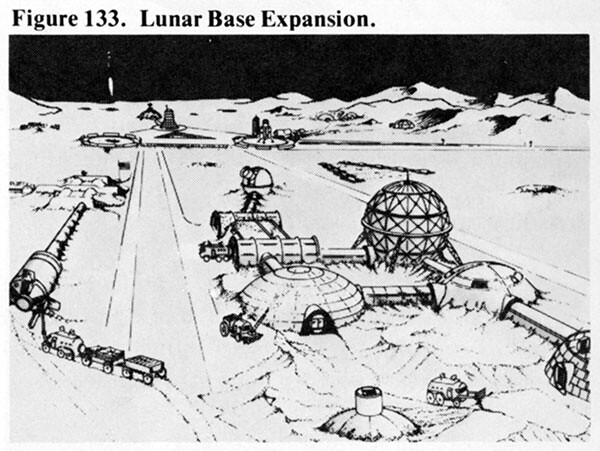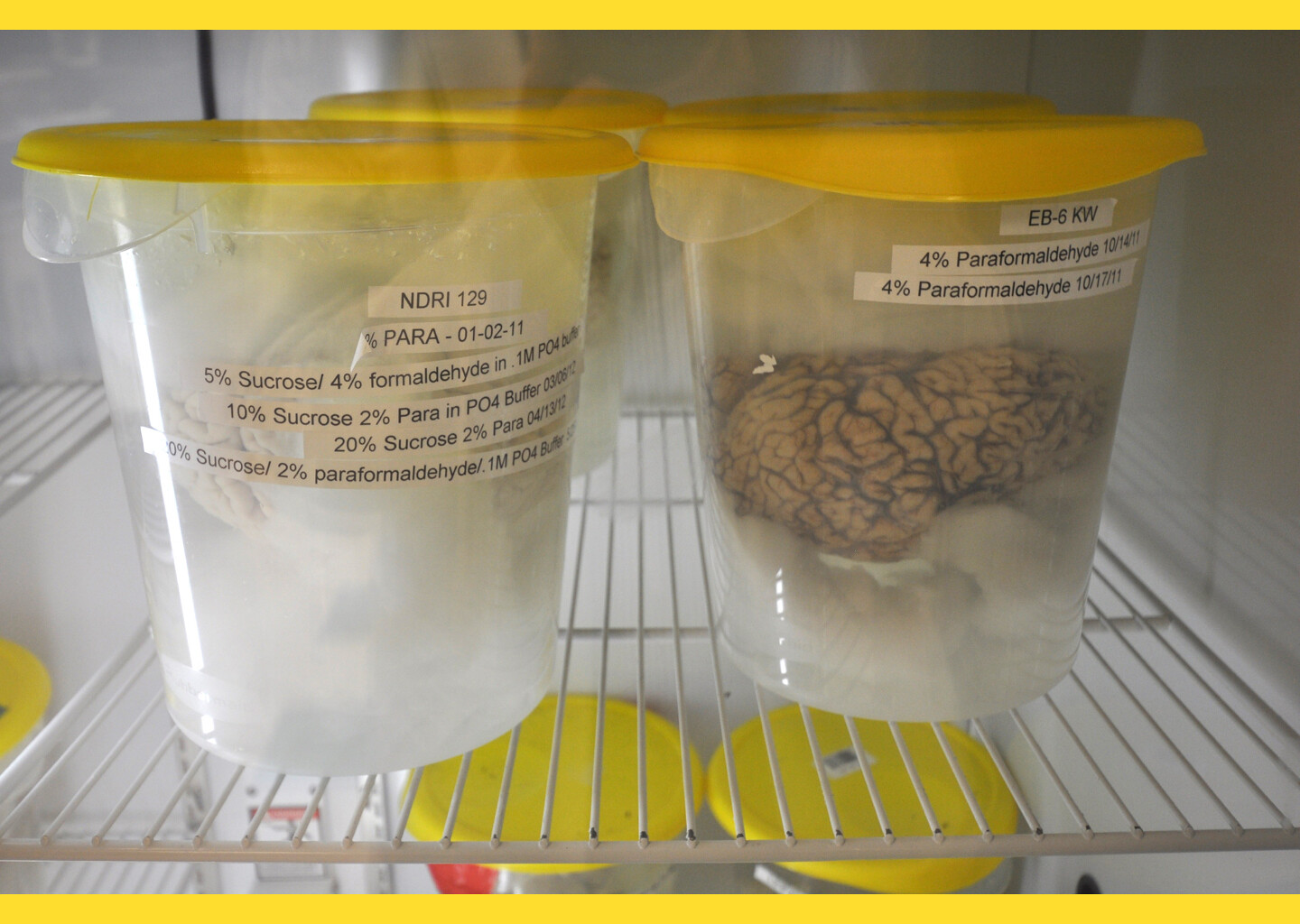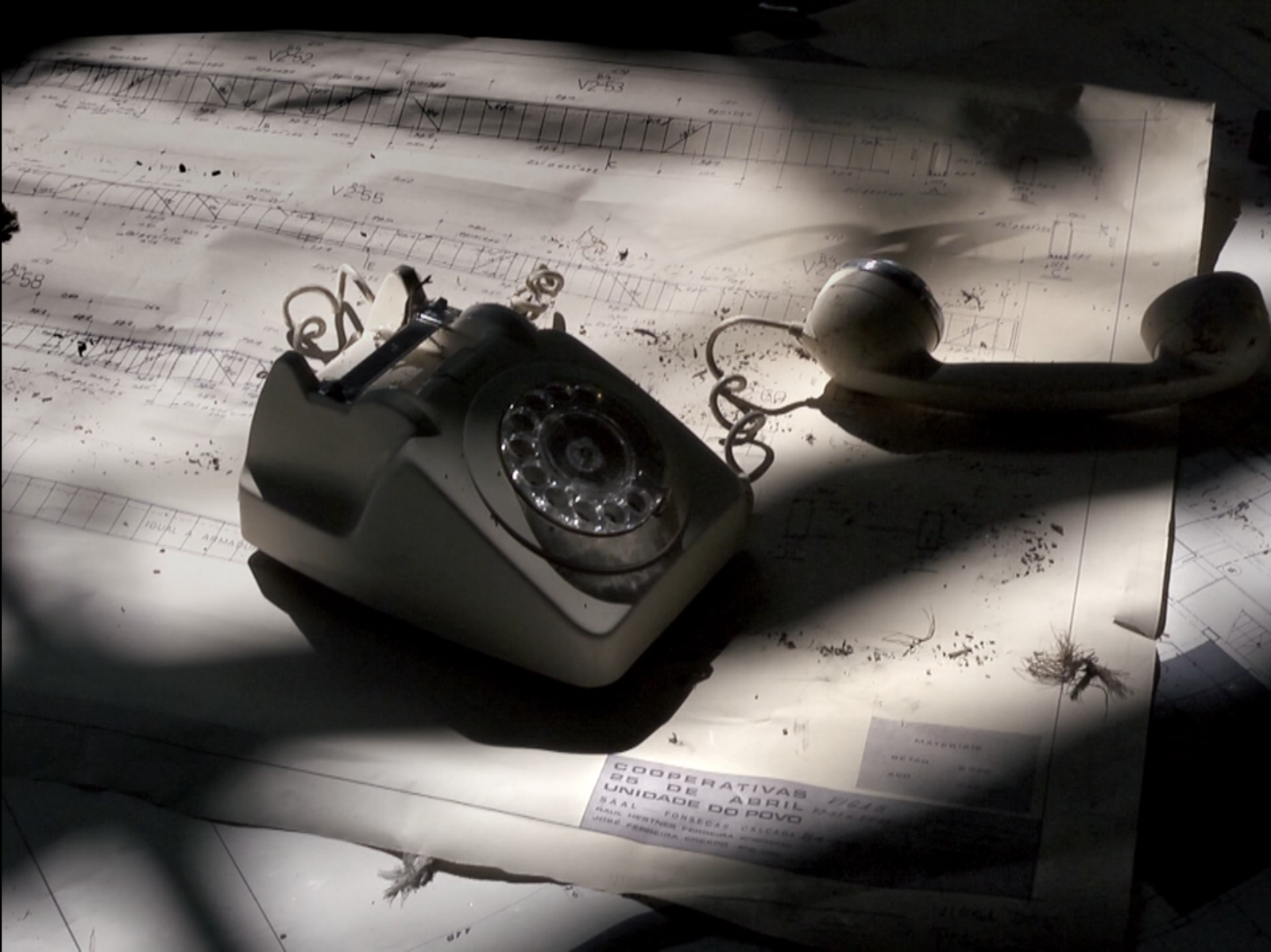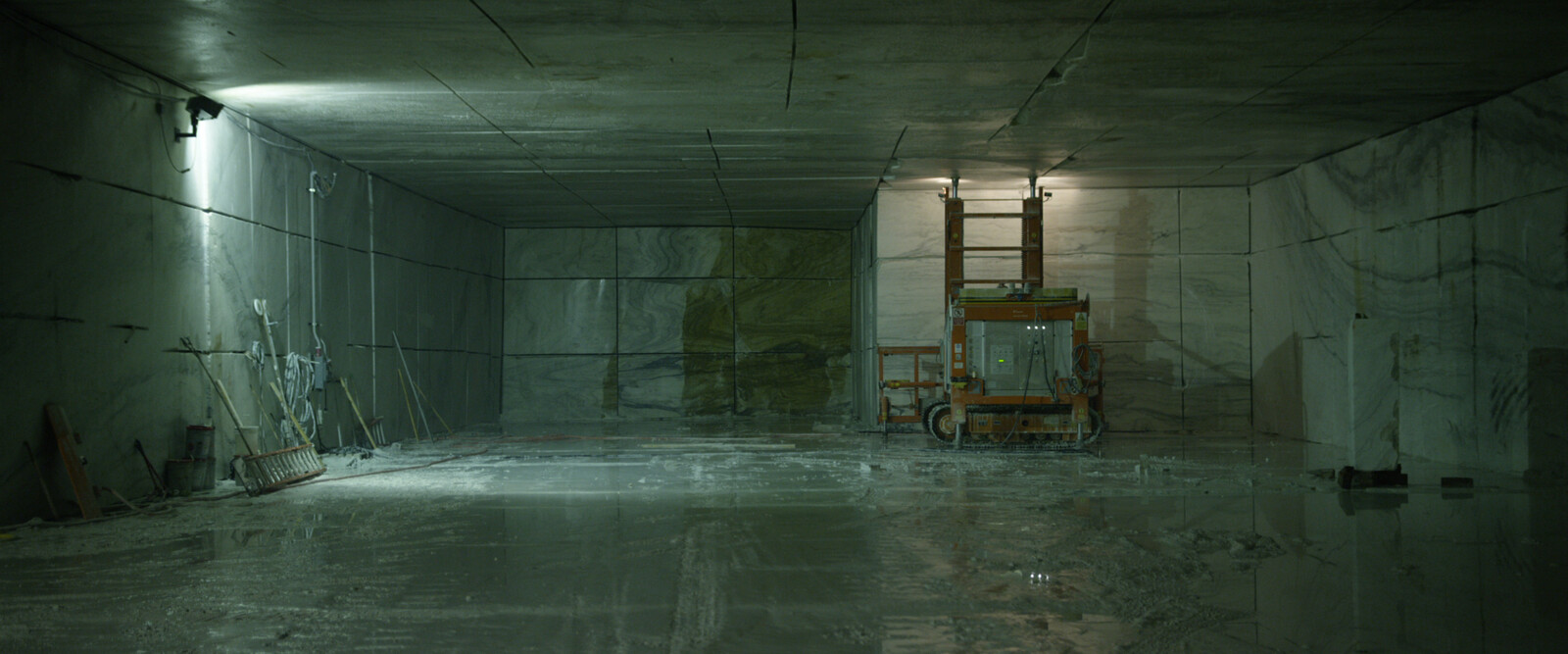Speaking at the Conference on Space Manufacturing Facilities (Space Colonies) at Princeton University in May 1975, German-American aerospace engineer and science-fiction writer Jesco von Puttkamer reported on NASA’s long-range plans for manned space flight missions, inflecting his remarks to account for “such far-future undertakings as space colonization, space industrialization, and manned planetary exploration.”1 The conference was dedicated to demonstrating the technical and economic viability of Princeton physics professor Gerard K. O’Neill’s rather hallucinatory visions for “Earthlike” space colonies, also seeking to enhance the profile of, and hence mechanisms of financial support for, his endeavor. To these ends discussions were to focus on “construction methods, productivity, and payoff to the Earth of permanent industrial habitats near the L5 Earth-Moon Lagrange libration point,” a point of stable gravitational equilibrium between the Sun, Earth and its moon.2 The first colony would be located at L5, or so it was imagined, remaining in line with the Moon as it orbited Earth but not needing to expend fuel to maintain this position indefinitely. From this base ever-more-gigantic colonies and industrial installations would be built in line with O’Neill’s bootstrap narrative.3 Always optimistic and in tune with the import of rapid return on investments, O’Neill estimated that one could “put the earliest technically possible date for the first space community at somewhere between 1988 and the year 2000.”4
Achieving this goal would take more than enormous monetary funds. Additionally, creating entirely new worlds—what von Puttkamer termed “man-made worlds” to distinguish them from transport vehicles or lunar mining settlements—would require advancing scientific and technical knowledge towards the design of such unprecedented artificial territory as well as expanding knowledge about the humans and human communities who would be sent to populate and work within or upon it. Space colonies, that is, required an integrated environmental design strategy appropriate for such a complex biopolitical apparatus; a design strategy operating at once in the material, informatic, social, political, physiological, and subjective or psychological domains. Yet the simultaneous design of the human and their physical environment was not exactly unique to space colonies, and by 1975 Earth itself was already extensively a “man-made world,” which an engineer like von Puttkamer must have been aware. But in being called upon to imagine how NASA’s existing and future space technologies might be directed not just towards manned space exploration (ostensibly in the name of science) but further instrumentalized for the design of space colonies and their inhabitants, he introduced—among an array of more pragmatic diagrams, flowcharts, tables, etc.—a symptomatic and fantastically ambiguous image of post-Vitruvian man.5
Appropriating Leonardo da Vinci’s famous late-15th century drawing, von Puttkamer’s diagram, “Evolution of the Earth Orbit Space Community” seems, in retrospect, to be haunted by disturbances in the anthropocentric, anthropometric, and anthropogeographic logics informing traditional Western conceptions of architecture and design. Prompted by his encounter with space colony visions, Von Puttkamer’s image also allegorizes the constructive tension between aesthetics and instrumentality that renders design practices so provocative and problematic. In harboring such an extreme or literal notion of how design practices are always and already designs of the human, it is my hope that space colonies and the cultural imaginaries to which they give rise can serve as a productive vehicle for reflecting upon the ontological and epistemological stakes at play in design.


Post-Vitruvian man. “Evolution of Earth Orbit Space Community,” from Jesco von Puttkamer, “Developing Space Occupancy: Perspectives on NASA Future Space Program Planning” in Space Manufacturing Facilities (Space Colonies), 1977.
Occupational Prerequisites
In 1962, von Puttkamer joined the aeroballistics division of NASA’s Marshall Space Flight Center in Huntsville, Alabama, at the invitation of German-American rocket scientist, space architect, and fellow science-fiction writer Wernher von Braun, who had been instrumental in developing the V-2 rocket for Nazi Germany. Von Braun’s team in Hunstville developed the Saturn V rocket used in the 1969 Apollo Lunar Landing—a euphoric moment in US history, galvanizing national pride at the height of the Cold War space race—and von Puttkamer worked, in turn, on the ill-fated Skylab space station and solar telescope after von Braun’s departure. Launched into orbit in 1973, Skylab was abandoned in 1974 as funding priorities shifted, and in 1979 its debris scattered in Western Australia. In 1974, the year before the Princeton conference, von Puttkamer was transferred to NASA headquarters in Washington DC and put in charge of long-term planning as the agency transitioned from a research phase to “a new era of applications oriented space operations based on the space shuttle.”6 NASA’s space shuttles bore the pressure of commercial applications and were cast as elements of an international space transportation system (STS), more than examples of US technical supremacy.
Among NASA’s main goals at this time, von Puttkamer indicated, was “to continue to provide the capability for man to operate effectively in the space environment.” Extending knowledge of human physiology and psychology was central to this techno-scientific enterprise, as was imagining what the “good life” might be in outer space. The capability of which he spoke was therefore not just that of enabling humans to physically and psychologically survive within extreme environmental conditions, but to “operate effectively” as productive subjects when suspended within a space colonial apparatus. To ensure the desired operationality of the human in such a unique and untested, although still distinctly biopolitical (and in this sense all-too earthlike), environment entailed not only scientific study and measurement of the human but also its redesign. What von Puttkamer called the “increasing penetration of space by man” remained the shared ambition of this international phase of space research. Yet the collaborative design of artificial environments for extraterrestrial forms of human life involved an increasingly complex articulation of techno-scientific know-how with territorial ambitions and economic logic. This application of science and engineering expertise to space colonies, moreover, implicitly called into question ideals of anthropogeography, of the human thought to be in their proper or natural place.


“Typical Technological Prerequisites of Far-Future Space Endeavors,” from Jesco von Puttkamer, “Developing Space Occupancy: Perspectives on NASA Future Space Program Planning” in Space Manufacturing Facilities (Space Colonies), 1977.
Von Puttkamer remained evidently more skeptical than most conference participants about imminent prospects for actually realizing human colonies in outer space, repeatedly situating totally designed worlds in the years 2000+. Yet the conference had implications bearing on future NASA funding, so he offered a series of four overlapping evolutionary scenarios for the potential phasing of “space occupancy,” suggesting the knowledge to be gained was relevant whether the end result be a space colony or not. His narrative began with “permanent occupancy of near-Earth space,” such as a space station or orbital launch facility, followed by “permanent occupancy of Earth-Moon space” in the form of a manned geosynchronous space station or orbiting lunar station, then “full self-sufficiency of man in Earth-Moon space,” in which he situated the L5 community along with lunar colonies and space cities like Krafft Arnold Ehricke’s dream of “astropolis,” and ended with “permanent occupancy of heliocentric space,” such as asteroid colonies or radiation-protected Mars settlements. In addition to artists’ renderings depicting spacecraft, bases, and other settlements replete with control rooms and geodesic domes in a familiar pop-realist science-fiction aesthetic, von Puttkamer supplemented his narrative with extensive diagrams, charts, and tables illustrating, in a scientific and pragmatic tone, how environments proper to his four scenarios related to “technological prerequisites without which those utopias will always remain pipe-dreams.”7 He organized these prerequisites into six categories (transportation, habitation, engineering technologies, life sciences, operations technology, and advanced management concepts), analyzed components of each, and detailed multiple connections and nodes between them within the larger system. But as suggested above, the by-then customary artistic renderings, scientific diagrams and data tabulation were less remarkable than his appropriation of Leonardo’s Vitruvian Man, which von Puttkamer situated at the center of a depiction of four possible evolutionary trajectories pertaining to the lowest category, near-Earth space. Nowhere in his text does he mention or account for this gesture.
Leonardo’s anthropometric drawing superimposes two figures of man, each cast as a geometric proportional measure: one is depicted with legs vertical and arms held horizontally, his proportions inscribed neatly within a square; the other has legs splayed and arms raised at a higher angle to be inscribed similarly within an overlapping, albeit not squared, circle. The drawing is typically read to privilege man’s dual position at the center, and as a proportional measure, of both earthly and cosmic (or secular and divine) domains, respectively. It returns us to the problem of conceptualizing the mutual reciprocity of humans and their environments, in this case at both microcosmic and macroscopic scales, for Leonardo read the body in relation to both its interior workings and to the Earth and cosmos, referring to man as “a lesser world.” Von Puttkamer’s rendering eliminated the square/earthly module and dislodged the latter, spread-eagled cosmic figure, recontextualizing it within contemporary techno-scientific agendas and implicitly dismantling Leonardo’s metaphysical ideals.
It is perhaps not surprising that von Puttkamer would remove the earthly side of the equation, for space colonies are by definition extra-terrestrial, having departed quite literally from the terra or Earth. But the valence of what we might call “once-cosmic” man is perhaps even more violently shifted in this gesture. The figure is grafted, somewhat awkwardly, to stand on two platforms occupying the lower quadrants of the circle—on the left, “man’s utility in space,” leading to the evolution of a human’s “operational capability,” and on the right, “manned systems evolution,” leading towards the development of “future manned facilities.” The former privileged the role of humans within this technoscientific apparatus, the latter machines. On the upper part of the diagram we find the figure’s hands pulled beyond the circle, not in the form of a measuring device but to tie him to two further trajectories—“sts [space transportation system] development and potential evolution” and “development of man-tended free flying payloads.” Components of the bubble diagrams attending to each of the four trajectories become increasingly tentative or hesitant as the figure’s scientific and technical extensions pull him outwards towards the year 2000+. The overall image hesitates to even imagine future scenarios beyond the international space facility upon which von Puttkamer worked.
In von Puttkamer’s diagram, Vitruvian Man no longer serves as a bodily analogy or proportional measure able to shift back and forth between Earth and the heavens. Yet remnants of Leonardo’s artistic figure continued to haunt the engineer’s conception of a man-made world in outer space. The archaic figure representing the cosmic pole was in fact suspended just as ambiguously in his new context as he was in Leonardo’s diagram, if now embedded within a speculative field of space operations. We can read it either as the ghost of humanism stretched to its limit (crucified?) by this new epistemology and the apparatus it sought to create, or by contrast, as another kind of center or privileged node within an expanded system of science and technology, a point that might somehow hold together possible futures, deploying them as yet-further extensions of man. The latter reading raises the specter of engineering hubris, as humans like O’Neill sought to replace God’s power in creating future worlds. The former reading brings me back to the less godlike status of humans within the larger picture.
Within space research, the human remained a key component, the site of extensive measurement and calculation, the very medium through which to collect data about physiological, biochemical, mechanical, psychological, and social systems. It was not of course ideal measures or proportions that were sought, but data establishing normative standards and degrees and frequencies of deviation from them; data that could be statistically fed into a new set of depictions. These notably include ergonomic figures (symptomatically absent from von Puttkamer’s illustrations), the dimensions of which were quite literally inscribed within space vehicles.8 The translation of such applied research from the space transit system that remained the focus of von Puttkamer’s work to the expansionist agenda of O’Neill and his followers’ vision of space colonization, with its search for new lebensraum, implicitly recast any such instrumentality of the human, raising the question of just who the figure at the center might be. Under the category of “life sciences,” von Puttkamer listed environmental control and life support systems, radiation shielding, physiological adaptation, spacesuits, “training/simulation/indoctrination requirements,” psychological factors of long duration flights, and sociological factors of extended missions as critical points of study. All such measures, including indoctrination, were of course necessary “to continue to provide the capability for man to operate effectively in the space environment”; they were biopolitical elements crucial to optimizing this system’s productive capacities.
Decentered
In “The Living and its Milieu,” Georges Canguilhem offered a distinct reading of mutual reciprocity between humans and their environment, one seeking to complicate or counter politically ambivalent claims that a determining influence “authorizes man’s unlimited action upon himself through the medium of the milieu,” the implications of which seem relevant here.9 Tracing within modern science intertwined archaeologies of mechanistic and biological conceptions of relationships between organisms and their milieu, he insisted that inherent to such relations was a persistent indeterminism and multiplicity, and hence structural mechanisms of diversification, negotiation, and change. Canguilhem underscored that a human milieu was not natural but artificially constructed: “It is a fundamental characteristic of the living thing, that it makes its own milieu: it builds one for itself,” he wrote, adding, “the milieu on which the organism depends is structured and organized by the organism itself.”10 When Canguilhem inverted the primacy typically afforded to environmental influences on the human, arguing that “to the extent that he exists in history, man became a creator of the geographical configuration; he is a geographical factor,” he was not imaging entirely new man-made worlds in outer space. Moreover, Canguilhem reminds us that a living being—as a center, medium, or milieu—does not “dissolve into its environment. A living thing does not reduce itself to an intersection of influences.” Living beings, we might say, are not simply scripted by environmental apparatuses, even complex and highly scientific ones, just as human bodies never fit quite so neatly within humanist systems of geometrical proportion wherein man appears as a lesser world.


“Lunar Base Expansion,” from Jesco von Puttkamer, “Developing Space Occupancy: Perspectives on NASA Future Space Program Planning” in Space Manufacturing Facilities (Space Colonies), 1977.
When Canguilhem sought to denaturalize the conception of environment, and when he insisted on the irreducibility of the human to it, he was not seeking to shore up humanist assumptions of primacy and centrality or notions of agency and subjectivity. Rather, he was seeking to undermine metaphysical foundations and scientific blindness that read the world as given or absolute and as lacking potential for decisions (including political ones) and for change. This is rendered more explicit when he recalled the need to make political choices between “existential security and the demands of scientific knowledge” when confronted by the scientific revolution’s shattering of the cosmos, after which man became “no longer at the center of the world.” Following this event, he suggested, “it became necessary to choose between two theories of milieu, that is, in the final analysis, theories of space: a centered space, defined as being where the mi-lieu is a center; a decentered space, defined as being where the mi-lieu is an intermediary field.”11
Von Puttkamer’s diagram suggests an even-more radical decentering than that produced when Copernicus, Kepler, and Galileo dislodged Earth’s, and with it man’s, position from the center of the universe. His graft of the Vitruvian Man onto an indeterminate field of techno-scientific potentials of outer space, I propose, hovers ambiguously between a centered and decentered paradigm, no longer bound by linear geometries or Western metaphysics of space. Indeed, faced with the translation of man into biopolitical data, the Copernican revolution might well have started to seem modest in its manner of deposing a humanist subject from the center of his universe. This is precisely where Canguilhem’s reading of the indeterminacy and multiplicity inherent to such decentering becomes critical, as does a politics of taking a position and making decisions. Faced with the structural ambiguity attending the mutual reciprocity of a subject and his or her milieu, one is called upon to recognize the importance of ongoing negotiation and choice. That is, whether we are talking about an evidently artificial environment like a space colony, or its allegorical double in an earthly environment, functioning similarly as a biopolitical apparatus of subject formation, there remains the possibility for spaces of more progressive subjective and political revalencing, just as there remains space for a politics of design.
Jesco von Puttkamer, “Developing Space Occupancy: Perspectives on NASA Future Space Program Planning,” in Space Manufacturing Facilities (Space Colonies), Proceedings of the Princeton/AIAA/NASA Conference, May 7-9, 1975, ed. Jerry Grey (New York: American Institute of Aeronautics and Astronautics, Inc., 1977): 209.
“Abstract,” in Space Manufacturing Facilities, v.
As O’Neill explained of this orbit, the “L5 Lagrange libration point, 60° behind the Moon in the orbit of the Moon around the Earth… An object located at L5 would stay there forever.” Gerard K. O’Neill, “The Colonization of Space,” in Space Manufacturing Facilities, A-5.
Gerard K. O’Neill, “The Space Manufacturing Facility Concept,” in Space Manufacturing Facilities, 8.
There are actually two similar drawings reproduced alongside von Puttkamer’s presentation. I will focus on the second, in which Leonardo’s drawing is not simply retraced but mechanically reproduced.
Ibid., von Puttkamer, 209.
Ibid., von Puttkamer, 217.
On ergonomics, see John Harwood, “Skylab, or the Outpost,” AA Files 61 (2010): 93-99; and Harwood, “The Interface: Ergonomics and the Aesthetics of Survival,” in Governing by Design: Architecture, Economy, and Politics in the Twentieth Century, ed. Aggregate Architectural Collective (Pittsburgh: University of Pittsburgh Press, 2012): 70–92.
Georges Canguilhem, “The Living and Its Milieu,” trans. John Savage, Grey Room 03 (Spring 2001): 23.
Ibid., Canguilhem, 19, 26.
Ibid., Canguilhem, 24–25.
Superhumanity is a project by e-flux Architecture at the 3rd Istanbul Design Biennial, produced in cooperation with the Istanbul Design Biennial, the National Museum of Modern and Contemporary Art, Korea, the Govett-Brewster Art Gallery, New Zealand, and the Ernst Schering Foundation.
Category
Superhumanity, a project by e-flux Architecture at the 3rd Istanbul Design Biennial, is produced in cooperation with the Istanbul Design Biennial, the National Museum of Modern and Contemporary Art, Korea, the Govett-Brewster Art Gallery, New Zealand, and the Ernst Schering Foundation.
































































